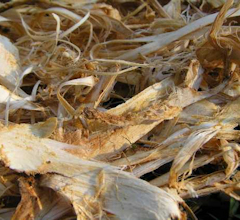Slippery Elm Bark
 Slippery Elm (or Indian elm) and its health benefits may not be as commonly known among everyday people. However, the inner bark from this tree is highly respected among herbalists – so let’s shed some light into one of nature’s best kept secret herbal remedy.
Slippery Elm (or Indian elm) and its health benefits may not be as commonly known among everyday people. However, the inner bark from this tree is highly respected among herbalists – so let’s shed some light into one of nature’s best kept secret herbal remedy.
What Is Slippery Elm Bark?
Slippery Elm is native to central and eastern United States and Canada. The inner dark brown or reddish-brown bark is the only part of the tree that’s used as medicine.
Historically, Native Americans peeled the bark off the Slippery Elm and used it as remedy for many ailments including fever, wounds and some infections.
What are the Health Benefits of Slippery Elm Bark?
In modern times, Slippery Elm Bark is used to alleviate the symptoms of various health conditions. Here’s some of them:
- Soothes Sore Throat and Cough
Slippery Elm Bark contains a secretion that coats the throat and may soothe it in the instance of generalised sore throat, pharyngitis, tonsillitis or swollen glands.
Slippery Elm Bark is used as an ingredient in many of the over-the-counter throat lozenges. Slippery Elm Bark may also aid in the alleviation of respiratory symptoms like bronchitis, asthma, laryngitis and voice problems.2
- Eases Digestive Disorders
Slippery Elm Bark is known for its regulation properties in the digestive system. It can soothe the stomach and intestines as well as decrease bowel irritation. As a mucoprotective agent, Slippery Elm Bark can help protect the outer layer of the stomach and intestine. Some people experience significant improvements in abdominal pain and bloating after taking Slippery Elm Bark products.3
Slippery Elm Bark products help with irritable bowel syndrome, and other digestive disorders including Crohn’s Disease, Colitis and Diverticulitis. It’s use is equally effective against diarrhea and constipation disorders.8
- Aids in Weight Loss
Some studies found that Slippery Elm Bark helps fight excessive body weight and obesity by suppressing the appetite and promoting bowel detoxification.3
The bark compound acts to accelerate bowel movements and also helps to remove fats from the body.4
- Helps with Urinary Tract Irritations
Slippery Elm Bark products are effective against inflammation issues of the urinary tract, like cystitis. The bark compounds calm the lining of the urinary tract and alleviate the painful and irritating symptoms. Some studies suggest that Slippery Elm Bark acts as a mild diuretic and helps eliminate metabolic wastes or toxins from the body.5
- Improves Skin and Hair Health
Slippery Elm Bark ointment is used to treat various skin problems like psoriasis, boils, burns and ulcers. Bark powder mixed with water helps make skin beautiful and smooth.6
Slippery Elm Bark products possess properties that make your hair strong, workable and beautiful. Slippery Elm Bark extracts help with hair growth, prevent hair loss and remove dandruff.7
- As a Nutritive Tonic
Traditionally, Slippery Elm Bark has been used in the form of a tea, broth, or gruel. As a nutritive tonic, Slippery Elm Bark is great for infants, physically weak individuals, and people recovering from severe illness. It can help nourish the body when other food items may not be retained in the stomach.1
Is Slippery Elm Bark Safe?
There are no formal toxicological studies on Slippery Elm or its products.
However, there exists a long history of safe Slippery Elm Bark usage worldwide. Slippery Elm Bark is Generally Recognised As Safe and Effective active ingredient by the United States FDA (since 1991).1
The benefits of Slippery Elm Bark are evident and paramount. So why not try Slippery Elm Bark today and unlock your wellness with traditional herbal medicine.
Properties
- Anti-Inflammatory1,3
- Asthma2
- Colitis3
- Constipation3,4
- Cough2
- Crohn’s Disease1,2
- Cystitis5
- Demulcent3,4
- Diarrhea3
- Digestive Function3,4
- Digestive Restoration3,4
- Diuretic5
- Fever Reduction1
- Hair Growth and Support6,7
- Prebiotic3,4
- Respiratory Support2
- Skin Issues6,7
- Toxin Removal3,5
- Ulcer Support3,4
- Urinary Tract Issues5
- Wound Healing1
References
- Upton R, ed. Slippery Elm Inner Bark: Ulmus Rubra Muhl: Standards of Analysis, Quality Control, and Therapeutics. Scotts Valley, CA: American Herbal Pharmacopoeia; 2011.
- Wijesundara NM, Sekhon-Loodu S, Rupasinghe HV. Phytochemical-rich medicinal plant extracts suppress bacterial antigens-induced inflammation in human tonsil epithelial cells. PeerJ. 2017;5. doi:10.7717/peerj.3469
- Peterson CT, Sharma V, Uchitel S, et al. Prebiotic Potential of Herbal Medicines Used in Digestive Health and Disease. J Altern Complement Med. 2018;24(7):656-665. doi:10.1089/acm.2017.0422
- Balliett M, Burke JR. Changes in anthropometric measurements, body composition, blood pressure, lipid profile, and testosterone in patients participating in a low-energy dietary intervention. J Chiropr Med. 2013;12(1):3-14. doi:10.1016/j.jcm.2012.11.003
- DiPasquale R. Effective Use of Herbal Medicine in Urinary Tract Infections. J Diet Suppl. 2008;5(3):219-228. doi:10.1080/19390210802414220
- Braun L. Slippery Elm. J Complement Med CM. 2006;5(1):83.
- Griggs B. Helpful Herbs for Health and Beauty: Look and Feel Great, Naturally. Infinite Ideas; 2008.
- Hawrelak JA, Myers SP. Effects of two natural medicine formulations on irritable bowel syndrome symptoms: A pilot study. J Altern Complement Med N Y N. 2010;16(10):1065-1071. doi:10.1089/acm.2009.0090
